
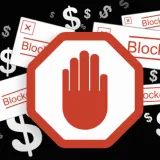

5 Things That Show You Don't Actually Have A Brand

Following our recent blog on 10 things to consider when reviewing you brand, here are some things that might give you the really bad news – you don’t actually have a brand!
What’s the definition of a brand? Conventional wisdom seems to be that the first brands were literally brands – markings on cattle to denote ownership. Arguably those marks served a somewhat different purpose to what we see as brands today.
So perhaps the first true brands were pub signs. The Romans had denoted inns with signs showing vine leaves, But again, these didn’t really denote a brand. In the late 1300’s Chaucer describes his pilgrims meeting at The Tabard Inn in London in The Canterbury Tales – one of the earliest references to a pub name.
We think the simplest definition of a brand today is: A business or product with a uniquely identifiable identity. We like this definition as it raises a question. Can you therefore be a business that has no brand? The answer appears to be ‘Yes’.
Every now and then a company approaches us, and we brace ourselves because we realise that we are effectively looking at a brand-less business. Despite the fact that Pull specialises in brand development, in most cases that is not why we are approached by the brand-less. It might be that they are looking for web or app development, or digital marketing. For us, the elephant in room in those situations is: “How can we promote your business when it doesn’t’ have a uniquely identifiable identity?”
So how do you know if you do or don’t actually have a brand? Here's our guide:
1) Your logotype is undecipherable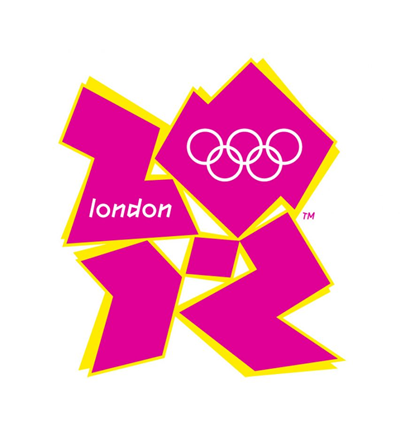
Harsh perhaps, and controversial - some professionals praised the design of the 2012 Olympics logo. And by the closing ceremony most people probably ‘got it’. But then billions of people would have seen it multiple times by then. So, what works better than a complex logotype? Be simple, be unique, stand out and incorporate your brand name.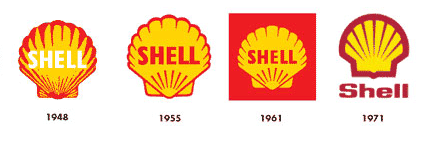
If you do this really well. Eventually you may not even need to spell it out: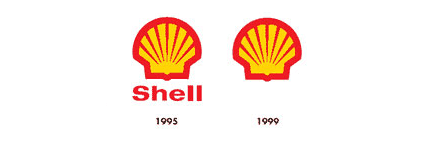
Over time your logotype WILL be simplified. So, start simple and you will have minimum need for revisions. And consider recall – if you ask a customer to describe your logo, could they do so confidently?
2) You think your logo is your brand
This is the next sign that you might not actually have a brand. People! Your logo is not your brand. You can have a logo but no meaningful brand. Your logo is simply one element of your identity, in fact, at Pull we are careful to use the term ‘visual identity’ when we’re talking about logo and associated graphic elements – the visual elements on their own don’t constitute a brand! We use this schematic to consider what components of a client’s brand might be missing.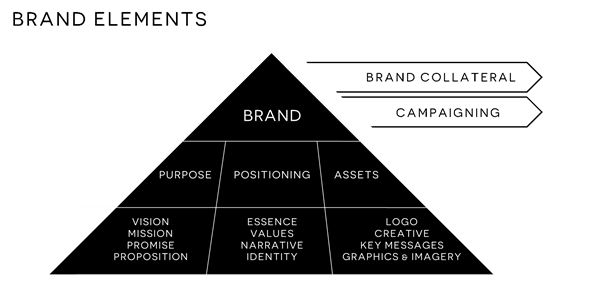
When asked to develop brand collateral like a website or brochure, or develop a campaign, we often ask a client to consider if they have all components of a brand in place. The conversation may then consider the most fundamental: Why do you do what you do? Provenance: How did you come to be? through to – the logo. As far as we can, we resist developing brand collateral and campaigns until we feel confident our clients really have a brand. Which is why we so often start a client conversation about digital marketing and end up working on brand development first.
3) You have 0% brand awareness and no brand descriptor
How often have you followed a sign-written van? And seen something like ‘Scroggins – Number 1 for value’. Scroggins might have 1 van or 1,000. You might see all 1,000 and never know what Scroggins do. What chance have you got of recalling and buying Scroggins?
Many of our clients have some audience awareness of their brand but are not globally recognisable. So, we normally recommend a descriptor rather than a tagline. Maybe a tagline at a lower level. A descriptor works well when you aren’t a mega brand. Once upon a time Coca Cola wasn’t a mega brand and it didn’t use a tagline like ‘The Real Thing’ it used a descriptor.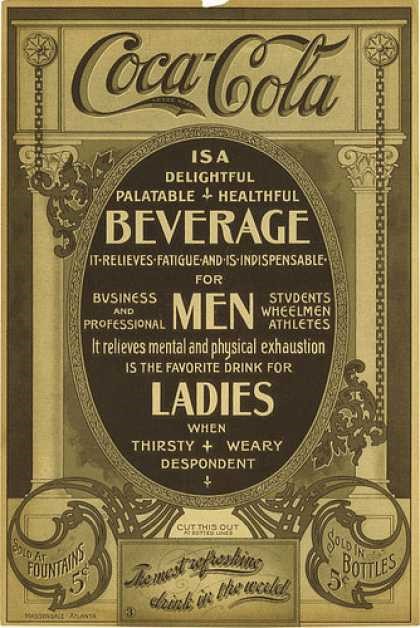
And so when we developed a whole new identity for our client Andertons, the brand lock-up looked like this: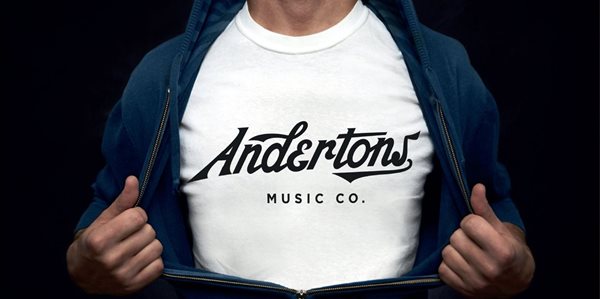
And the tagline like this: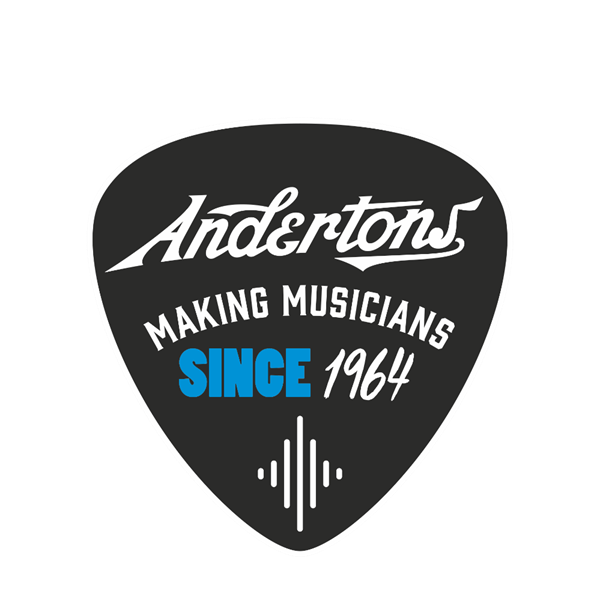
4) You have no visual structure or framework for your brand
A simple, unique identity x impressions = awareness. But that formula doesn’t stand a chance if no-one in your firm knows how your brand works or should be applied. Typically, a set of guidelines is the best way to organise that information and provide a reference point for our clients. Sometimes these are fifty-page documents. Sometimes only five. Sometimes provided online and sometimes in print. But your brand needs a reference point to enable a cohesive roll out of its visual identity. If you don’t have guidelines, you probably don’t have a brand. But be warned – guidelines aren’t an instruction manual, who reads those? They should be an engaging, living and breathing reference point that enrols the reader, communicates values and takes them on a journey of ‘brand enlightenment’!
5) You don't dominate page 1 of Google for a brand term search
What happens when you use a variation of your brand name in a Google search? If you appear with a one-line entry on a page that includes results that don’t relate to you, competitor ads and other stuff, then you don’t own that term.
Think about the subliminal effect of this situation on someone looking for you with a brand term. Chances are that at this point they won’t even click your link. Meaningful brands own their search results.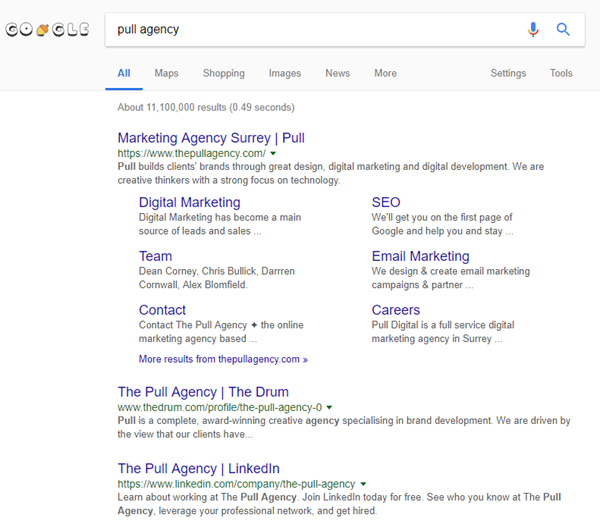
So in summary: To have a meaningful brand, make sure you have all the components of a true brand in place: A simple, unique and easy to recognise logo, use a descriptor as part of your logo lock-up, make sure that you are as visible as possible on page 1 of Google for a brand term search (don’t forget you can buy your way to the top of the page with Google AdWords) and make sure you have effective brand guidelines – and use them to inspire your staff.
Posted 28 February 2018 by Chris Bullick